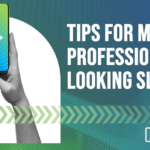Staying Productive & Healthy While Working From Home

eSlide has been a remote company for more than 10 years, so we’ve learned A LOT about how to set up workspaces at home. Many of you are making that transition at lightning speed due to COVID-19. We wanted to share some tips, so your home office can be productive and ergonomically safe. Here are 10 important things to be aware of:
1. Prepare and share
Bear in mind that working from home is going to be different than working at the office. Allow time on team calls to address glitches and share solutions to make the transition as smooth as possible for everyone. This new way of working might feel odd at first, but it definitely gets easier with practice. Here’s more on virtual meeting technology and preparation.
2. Create a dedicated workspace
If possible, create a designated area in your home for work. This will help you stay organized, enable you to get started smoothly each morning and prevent work from seeping into non-work time. Having a dedicated workspace will also enable you to set up an ergonomically correct and safe workstation rather than working from somewhere that forces you into poor body mechanics.
3. Choose a safe worksurface and chair
Although the couch could serve for one quick conference call, working from home full-time requires a good surface for your workstation. If you don’t have a desk, a table will do – even if that means sitting in the kitchen or some area that can’t be fully dedicated to work. The important thing is that the worksurface is a good height for long periods of sitting. And speaking of sitting, you should choose a seat with a stable base and back rest. Here’s more in-depth info on chairs and sitting well.
4. Position legs and arms first
To avoid back and shoulder problems, your forearms should be parallel with your worksurface with your upper arms alongside your torso while working (so your arms should form a 90-degree angle). To check this, have someone take a picture of you from the side while you are at your workstation. If it shows your elbows below your worksurface, you’re sitting too low. You can fix this by adding a folded blanket to your chair so your torso can be higher.
Once your arms are in a safe position, pay attention to where your feet are. Both feet need to be flat on the floor or another surface with your legs as close to a 90-degree angle as possible. If you’ve raised your torso up, you’re probably going to need to put something under your feet too. A book or shoebox will work.
This positioning is particularly important when you’re doing heavy content creation work, such as writing a document or designing a business PowerPoint presentation.
5. Make screens work for you
Too often we start by positioning our screen and contorting our body to work around it. Screens should adapt to you – not the other way around. Once your arms and legs are positioned well around the worksurface, adjust your screen so that the top of your monitor is approximately at eye level. If you need a little extra height, you can add a stack of books under the stand. If you’re using two screens, arrange them in a ‘V’ position with your torso in the center, so you can view them both easily without too much neck movement.
6. Avoid glare
Try to set up your workstation so you don’t have a window behind you, unless you can lower the blinds. This will reduce glare, which will minimize eye strain and avoid headaches. (BONUS: this also makes it easier for colleagues to see you during virtual meetings.)
7. Bring keyboard and mouse close
You shouldn’t have to reach out for your keyboard, mouse or any other items that you use frequently while you’re working. Again, remember your 90-degree angle and think about keeping your upper arms alongside your torso as much as possible while you work.
8. Apply lessons to laptops and standing desks
All the above rules apply to using laptops and standing desks too. It’s important to note that if you will be using a laptop for long periods of time, you should invest in a USB or Bluetooth keyboard and mouse, so that your monitor can be at eye level while keyboard and mouse allow your arms to be in proper ergonomic position (see #4 above).
9. Move every 20 to 30 minutes
The most important thing you can do to be productive and pain free is to move every 20 to 30 minutes. This can be as simple as pacing around while you’re on a conference call, or you could even do some stretches or pushups while you’re doing solo projects. It doesn’t really matter what you do – but you must keep moving to avoid aches and pains from being still for long periods of time.
10. Take a break
It’s easy to fall into the trap of working all the time when you work from home. Yet the research shows that this is exactly how NOT to be productive. Life is often about balance, and while it is important to be focused while working, your brain needs periodic breaks just as much as your body does.
We wish you all the best in these unusual times – and rest assured that eSlide is open and ready to help when you need us. Whether it’s a quick slide deck tune-up or a larger project, we’ve got you covered. Give us a call or contact us online.








